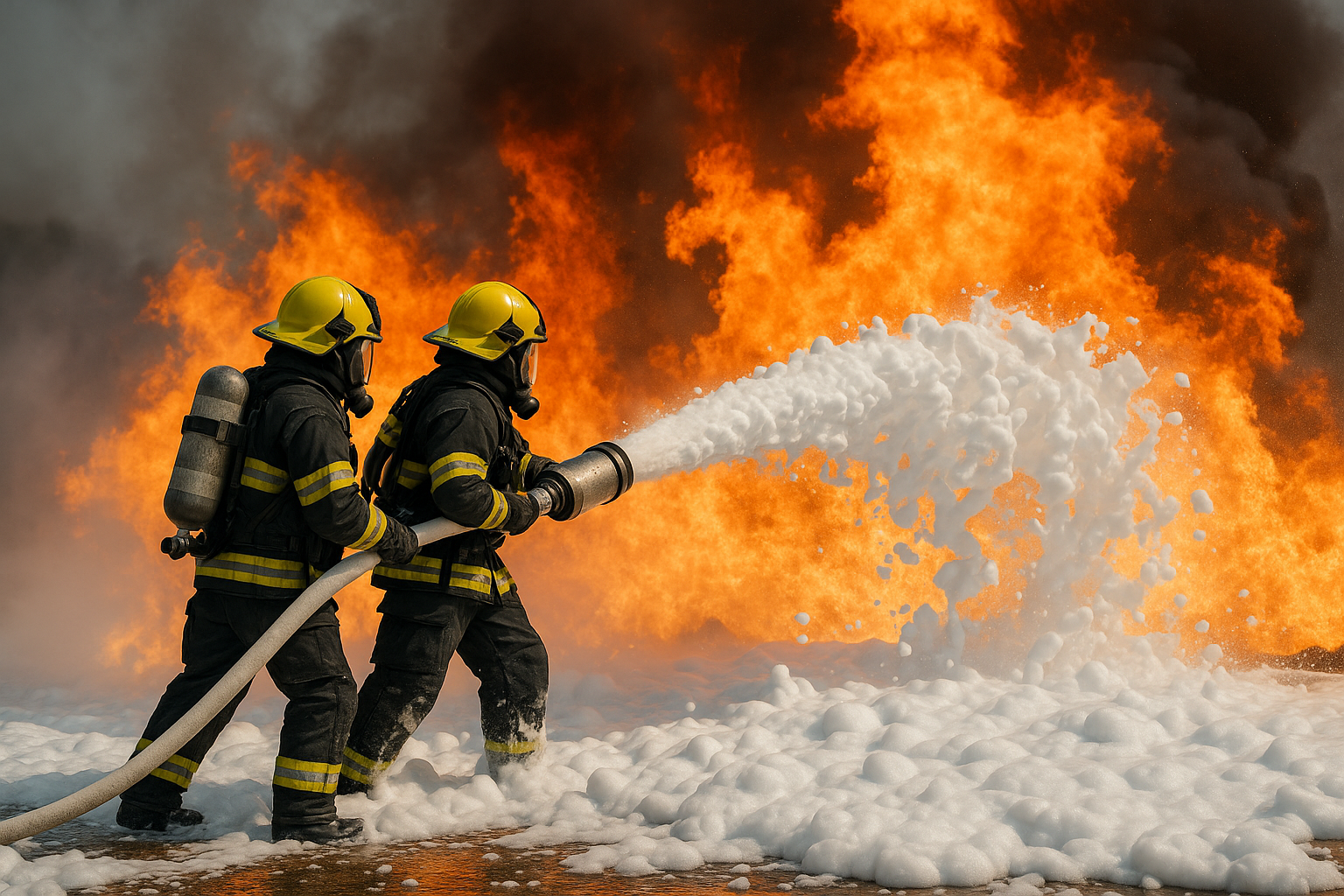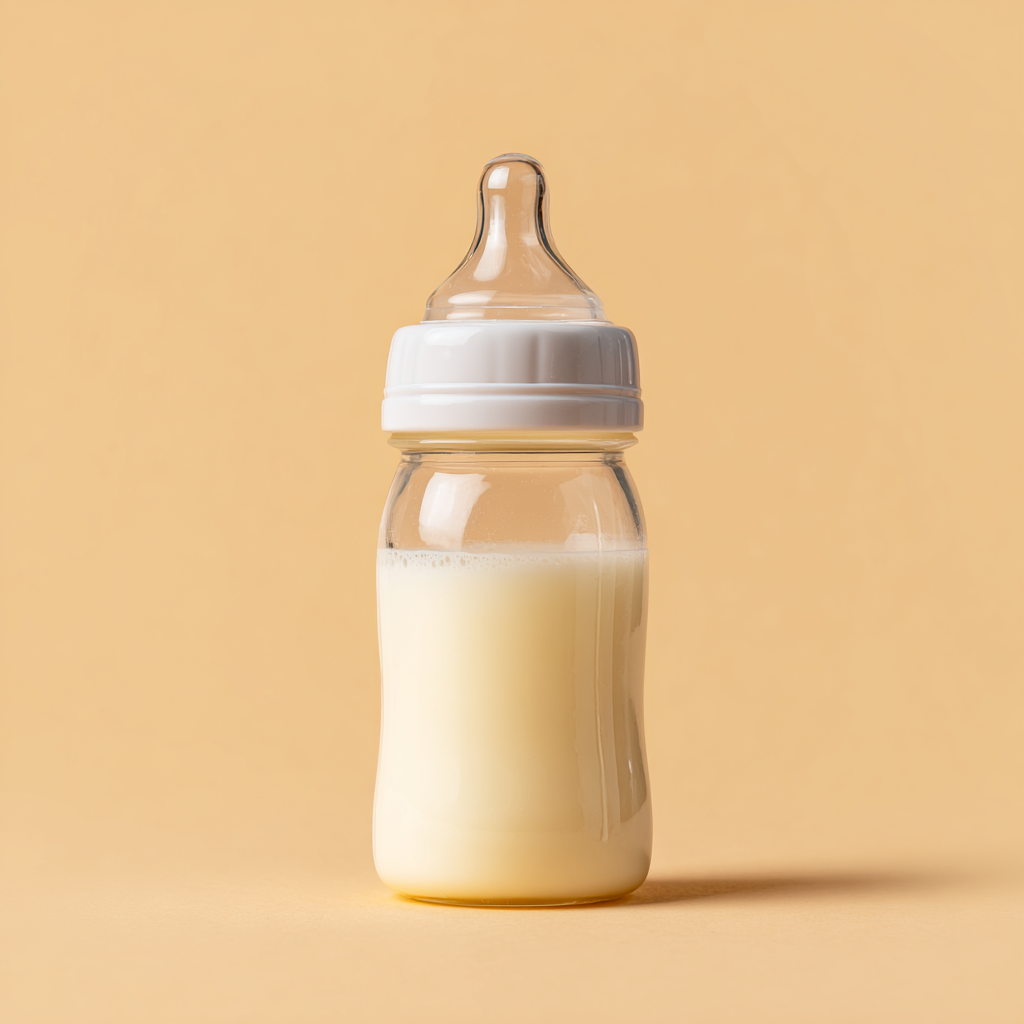AFFF (Aqueous Film-Forming Foam) is a firefighting foam commonly used to extinguish fires caused by flammable liquids, like jet fuel, acetone, and gasoline. This foam contains per- and polyfluoroalkyl substances (PFAS), which don’t break down naturally, and the International Agency for Research on Cancer (IARC) has classified them as carcinogens.
As a result, individuals who have been exposed to PFAS have been found to have higher rates of various kinds of cancer, including bladder cancer, breast cancer, kidney cancer, prostate cancer, testicular cancer, and even thyroid disease and immune system dysfunction.
What Is the AFFF Firefighter Foam Lawsuit?
AFFF firefighter foam lawsuits are hinged on allegations that manufacturers deliberately exposed military personnel, firefighters, and airport workers to dangerous firefighting foam containing toxic PFAS chemicals without adequately warning them about the potential health risks.
From the 1960s, manufacturers have used AFFFs in firefighting operations to put out fires involving flammable liquids. But PFAS chemicals in this foam are linked to severe health risks, including various types of cancer.
Claimants in AFFF firefighter foam cancer lawsuits claim that manufacturers had access to scientific evidence and research showing the dangers of PFAS. Yet, they continued to manufacture and distribute the foam without disclosing the associated risks.
Airport firefighters, municipal firefighters, military firefighters, and industrial workers who regularly use AFFF in their work settings are among the individuals at high risk of PFAS exposure.
Eventually, these persons experienced adverse health effects, such as bladder cancer, kidney cancer, and other devastating illnesses.
The AFFF firefighter foam cancer lawsuits seek to hold AFFF makers liable for not protecting those who relied on their products to carry out their work.
Thousands of plaintiffs are seeking financial compensation to cover medical expenses, lost income, and emotional distress these health complications have caused.
Why AFFF Foam Is a Health Concern for Firefighters
Since the 1960s, AFFF foams have been used to extinguish fires. Although these foams are effective in extinguishing fires and helping firefighters to regain control of life-threatening and dangerous situations, they can present their own life-threatening dangers, too.
That’s because of the chemicals used to make AFFF foams. As stated above, AFFF foams are made using PFAS. PFAS, also commonly known as “forever chemicals,” are used in the manufacturing of AFFF foams because of their grease-repellent, heat-resistant, and water-resistant characteristics.
However, their durability comes with a major drawback: PFAS don’t degrade easily in the environment or human body, causing persistent bioaccumulation and contamination, affecting human health and the environment over time.
Although PFAS are incredibly effective in firefighting, concerns about their health and environmental risks began to arise after decades of use.
Scientific studies conducted in the 1990s and 2000s showed that these toxic chemicals were present in water supplies, soil, and even human bloodstreams globally.
This raised concerns over the chemicals’ potential to cause adverse health complications, such as cancer, immune system dysfunction, and liver damage.
The discovery of the long-term impact of PFAS exposure led to a wave of legal action and regulatory scrutiny.
Government agencies, including the Centers for Disease Control and Prevention (CDC) and the Environmental Protection Agency (EPA), classified PFAS as a public health concern, and thousands of plaintiffs filed lawsuits against AFFF manufacturers.
According to the Yale School of Public Health, “no amount of PFAS in the human body is safe as these toxic chemicals have been associated with a litany of health risks, such as cancers.”
Sadly, despite the risks linked to the toxic PFAS chemicals, manufacturers continued to use the toxic “forever chemicals” in various products, including firefighting gear and AFFF firefighter foam. Consequently, firefighters and military personnel have been exposed to these harmful chemicals for decades, presenting devastating risks of cancer and other severe health problems on the job.
Cancers and other adverse health complications associated with AFFF exposure include:
- Breast cancer
- Colorectal cancer
- Kidney cancer
- Infertility
- Skin cancer
- Thyroid cancer
- Ulcerative colitis
- Lymphoma and leukemia.
- Liver cancer: Scientific research shows that exposure to PFAS might increase the likelihood of developing fatty liver and hepatocellular carcinoma through effects on amino acid, hepatic lipid, and glucose metabolism. Thus, liver cancer is another severe health complication that firefighters face after AFFF use in their jobs.
- Bladder cancer: Data from FCSN (Firefighter Cancer Support Network) shows that breast cancer is the most common type of cancer among female firefighters.
- Prostate cancer: Scientific studies show a strong correlation between PFAS exposure and prostate cancer, with prolonged and repeated exposure increasing the chances of developing cancerous tumors.
- Testicular cancer: Research shows that male firefighters are diagnosed with testicular cancer at higher rates than the general population in the United States.
If you or a loved one was diagnosed with any type of cancer or any other severe health complication after PFAS exposure in your job as a firefighter, you might have valid grounds to file the AFFF lawsuit. Contact a skilled personal injury attorney as soon as possible to learn everything you need to know, and whether you are eligible to file a claim and pursue compensation for your damages.
Latest Developments in the AFFF Lawsuit Update 2025
As of July 1, 2025, there are 11,096 pending lawsuits. 705 new legal claims were added in June 2025. That marked a significant spike in the mass tort, which has been going on since 2018. This reflects a crucial moment in the toxic firefighting foam litigation: claimants’ attorneys are rushing to file claims ahead of a possible global settlement.
At the June 20, 2025, status conference, Judge Richard Gergel urged the parties in the AFFF MDL (multidistrict litigation) to settle personal injury allegations before the first bellwether trial, which is set for October 20, 2025. He urged DuPont, 3M, Johnson Controls, BASF, and other defendants to settle those claims soon.
The bellwether trial, set for October 20, 2925, will focus on allegations that AFFF, which contains PFAS, contaminated drinking water and caused cancer. Claimants tried to add testicular cancer allegations, but Judge Gergel denied that request, saying that it may confuse the jury.
This means it’s time to act if you’re yet to file your AFFF lawsuit. A reasonable settlement in this MDL is very likely this summer. Past settlements with public water systems are already more than $13 billion, and the defendants are under intense pressure to resolve personal injury allegations before trials start this fall.
On June 17, 2025, Judge Gergel laid out scheduling orders that set the roadmap for the first bellwether trial. However, the court is yet to determine which of the three claimants — Voelker, Donnelly, or Speers — will start, but the order locks the deadlines that’ll govern which one will go first.
AFFF lawsuits have been merged into an MDL 2873, which consolidates thousands of individual allegations into a single U.S. District Court.
The AFFF MDL offers a unified framework for parties seeking compensation in personal injury lawsuits and communities filing municipal water contamination lawsuits because of AFFF leaking into local water supplies.
Who Qualifies for an AFFF Lawsuit?
You’re eligible to file an AFFF firefighter foam lawsuit if you’re a firefighter or any other personnel who used AFFF during their employment, military service, or in other environments and have since been diagnosed with cancer or any other health complication because of PFAS exposure.
The primary factor in determining eligibility to file an AFFF lawsuit is exposure to PFAS, life-threatening chemicals found in AFFF, which are linked to severe health complications, like thyroid disease, liver cancer, prostate cancer, breast cancer, and more.
Here are other personnel who can file the AFFF firefighter foam lawsuit:
- Airport workers
- Military firefighters
- Military personnel
- Veterans
- Municipal firefighters
- Flight deck workers
- Chemical plant workers
- Employees who transport or dispose of aqueous film-forming foam (AFFF)
Thus, if you worked or currently work on any of these jobs and you used or were exposed to AFFF and developed adverse health issues, you can file the AFFF firefighter foam claim to seek monetary compensation for any damages suffered.
Major Manufacturers Named in the Lawsuit
Many companies are currently manufacturing AFFF foam or have manufactured it in the past. These companies can be held accountable for the injuries suffered by firefighters and their families.
The law deems a product “defective” if it’s proven to be inherently dangerous. Thus, companies that make and distribute defective products can be held legally liable for the harm caused by their products. That means that the proof of negligence isn’t necessary.
If a product is considered “inherently dangerous,” then making or selling it makes the manufacturer liable for any harm consumers suffer. So, suppose a manufacturer didn’t know about the potential health risks linked to PFAS when they started making and distributing AFFF. In that case, they can still be held fully liable for all the financial losses the firefighters and families suffered if it can be proved that the company’s AFFF is “defective” as per the law.
AFFF foam manufacturers sued include:
- AGC Chemicals Americas, Inc.
- 3M Company
- Arkema USA
- Corteva, Inc.
- Clariant Corporation
- ChemDesign Products, Inc.
- Dynax Corporation
- Chubb National Foam Inc.
- Carrier Global Corp.
- DuPont de Nemours, Inc.
- The Chemours Company
- Kidde-Fenwal, Inc.
- Tyco Fire Products
- BASF Corp.
- UTC Fire & Security Americas Company
Although courts don’t require proof of negligence to file a defect-based toxic firefighting foam litigation, there’s comprehensive evidence to prove that many of these companies are negligent in distributing AFFF foams containing PFAS.
The NCI (National Cancer Institute) first labelled PFAS as a potential human carcinogen in 2014. But many medical experts and researchers had concerns about the dangers linked to PFAS before this time.
If AFFF manufacturers ignored the adverse dangers linked to PFAS in manufacturing AFFF, that could offer additional grounds for you and your family to pursue financial compensation. This likely provides you with a ground to seek punitive damages as well.
Whilst the legal grounds for pursuing punitive damages vary from one jurisdiction to another, manufacturers can be punished for prioritizing profits over human safety.
AFFF Settlement Updates and Expected Payouts
AFFF firefighter foam lawsuit settlements will largely depend on various factors. A successful AFFF firefighter foam claim will present comprehensive information on exposure to AFFF, medical expenses, and documents outlining medical treatment, and more to prove the claim.
Other factors that can help determine the settlement amount include:
- Level of AFFF exposure: Frequency, length, and intensity of contact with AFFF.
- Health condition: Type of illness and its direct link to AFFF exposure.
- Medical treatment costs: Costs of surgeries, treatments, ongoing care, and hospitalizations.
- Effect on quality of life: Reduced ability to work, pain and suffering, and long-term health implications.
- Strength of evidence: Medical records, receipts, and expert testimony validating the link between health conditions and AFFF exposure.
- Employment history: Proof of working in environments where AFFF was regularly used, including military service and firefighting.
- Outcome of bellwether trials: Bellwether trial outcomes might set a precedent for future settlements in the AFFF MDL.
All these factors will determine a reasonable settlement amount for any given AFFF claim.
So far, no settlements have been reached in the AFFF MDL, but attorneys project that AFFF lawsuit settlements payouts will range between $20,000 and $500,000 based on the strength of the claim and other relevant factors.
(Please note that the estimated settlement amounts mentioned above are general projections and aren’t guaranteed. The figures are based on similar past litigations, the severity of injuries suffered, and the projected cost of damages. These figures are meant to give a picture of what settlement amounts will look like, and you shouldn’t take them as conclusive expectations for your lawsuit.)
Groups and individuals who were exposed to AFFF at work and those suffering from AFFF exposure via contaminated water have filed thousands of AFFF lawsuits.
In 2020, DuPont was asked to pay $50 million to a plaintiff who developed testicular cancer after being exposed to PFAS chemicals in drinking water that led to his diagnosis.
The AFFF claim argues that the plaintiff’s cancer diagnosis was caused by AFFF leakage into drinking water.
Claims filed for PFAS contamination in water have amassed significant settlement amounts:
- In 2017, DuPont was ordered to pay $671 million to settle thousands of claims for dumping PFAS chemicals into West Virginia waterways.
- In 2022, Wolverine Worldwide and 3M were asked to pay a $54 million settlement amount for PFAS class action lawsuits involving plaintiffs in Michigan.
If you were exposed to AFFF and later developed cancer or any other severe health complication, consult with a qualified AFFF attorney to learn the potential value of your lawsuit.
What Can Firefighters and Families Do Next?
Firefighters and military personnel have used aqueous film-forming foam to extinguish fires caused by flammable liquids. However, in recent years, there have been significant concerns about the life-threatening effects of AFFF, mainly because it contains toxic chemicals like PFAS.
Again, exposure to these dangerous chemicals is linked to devastating medical conditions like cancer.
Here are the key steps firefighters and their families should take after AFFF exposure:
- Get tested: If you have been exposed to aqueous film-forming foam, contact a medical professional as soon as possible. Although there are no globally accepted treatments for PFAS exposure, knowing the PFAS levels in your body can guide medical monitoring and future decisions about your health.
- Monitor your health: Frequent monitoring and check-ups are vital after AFFF exposure. Keep your doctor informed about your possible AFFF exposure and any unusual symptoms that might arise.
- Consult a qualified AFFF attorney: Speaking with a skilled AFFF attorney can make a significant difference in your lawsuit. Once you thoroughly explain your intensity of exposure, your attorney will start working on your case and gather the necessary evidence they need to file your lawsuit, including:
- Your military or employment records, which you’ll need to prove your exposure.
- Your medical documents, which you’ll need to prove your related diagnosis.
After gathering all those documents, your attorney will eventually file the claim against one or more manufacturers, based on the number of companies that exposed you to AFFF, and the litigation will start.
How AllConsumer.com Can Help
Determining if you’re eligible to file the AFFF lawsuit depends on whether you were exposed to the life-threatening foam and if you developed cancer or any other severe health complications after exposure. If you believe you were exposed to this dangerous foam, it’s vital to take steps to safeguard your health and seek legal help.
At AllConsumer.com, our goal is to inform the public about the latest consumer concerns. Sign up for our latest newsletter to stay informed!



